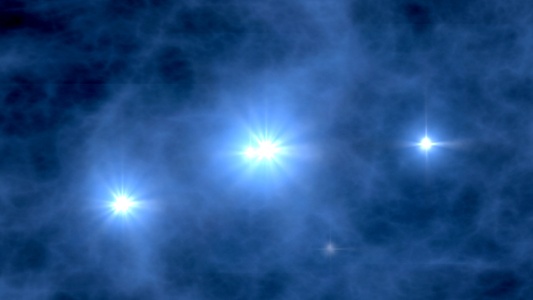The first stars to appear in the universe lived fast and died young. Today, none of them likely remain. But their remnants, the black holes and neutron stars, might still wander around the cosmos. Unfortunately, they’re extremely difficult to detect unless they merge, and according to new research the only way to see them would be to conduct an unprecedented survey of the local volume of the universe.
The first stars were probably huge, up to one or two hundred times the mass of the sun. With that kind of incredible bulk, their fusion reactions burned at a furious pace, shortening their lives to a mere few million years. Shortly after they arrived on the comic scene, they departed, setting the stage for new generations of smaller, longer-lived descendents.
That means that it’s highly unlikely for us to observe any of these first stars today. But when giant stars die, they leave behind remnants like black holes and neutron stars. Any of those dense objects that we observe today might be remnants from that bygone era, but it’s impossible to tell unless we can directly observe their chemical nature: the first stars were almost purely hydrogen and helium, with little to no pollution from heavier elements.
These remnants only become luminous – and hence detectable – when they get extremely bright. This can happen when they get too close to another star, pulling material from it and flaring in X-rays, or when they get torn apart during a tidal disruption event.
Recently, a team of astrophysicists investigated just how rare these events might be, with their results appearing on the preprint journal arXiv.
They found depressingly low odds. On average, the Milky Way is likely to only host less than 0.3 X-ray binary flares, and less than a millionth tidal disruption events, from remnants of the first stars. That means we would need to study thousands of galaxies to have a chance of observing a single flare, and millions of galaxies to catch a tidal disruption event.
However, not all hope is lost. Next generation X-ray telescopes, like ATHENA and LYNX, are in the design stage. They might have the capabilities to peer deep into into the local volume of the universe, gathering enough data to witness one of these active remnants. But it would take a monumental, and costly, survey to do it.


“On average, the Milky Way is likely to only host less than 0.3 X-ray binary flares, and less than a millionth tidal disruption events, from remnants of the first stars. ”
Okay, but is this the daily, monthly, or annual average? Or is it the average for the lifetime of the galaxy?
Sorry, but it makes no sense the way it’s stated.